San Sebastián is known to be the culinary mecca of Spain, and we enjoyed every moment of our time here. Only 12 miles from the French border, San Sebastián (or Donastia, as it is known in the local Basque dialect) was the perfect place to spend a month surfing and eating. We never had a shortage of delicious Basque, Spanish or French food, but you can imagine how our clothes fit after a month of living around the corner from hundreds of restaurants serving delicious food and wine. Our apartment was conveniently located across the street from the surfing beach and in the Parte Vieja (Old Town) where there are hundreds of pintxos bars in a square mile vicinity. (Pintxos is Basque for tapas, and they are delicious bite-sized appetizers that are traditionally served at bars.) To control our weight gain and budget, we tried to limit ourselves to going out 2 nights per week and the cooking at home for the rest of our meals. Needless to say, that was a very difficult goal to achieve. To give you an idea of what we were up against, here is some further reading on San Sebastián’s pinxto bars.
For those who are new to Spanish and/or Basque cuisine, we’ll give you a quick run down. The most popular food in Spain is cured ham, commonly referred to as jamón. (Learn more about jamón) Spanish jamón, like Italian prociotto, is cured and served in a variety of ways and can be found in almost every grocery store, bar and restaurant. Another common Spanish dish is paella, which is a seafood, meat and saffron rice dish cooked in a very shallow frying pan with 2 handles. I have tried to master paella in my own kitchen, but have found it to be difficult to evenly cook each rice granule. Cheese is another very popular food item. The most popular cheeses in the area are manchego, and specifically in the Basque country, Idiazabal cheese. Mike’s favorite local dish was chuletón, which is a Spanish ribsteak cooked over coals and served with red pimiento peppers and fries. I do have to say that after months of not eating red meat, it tasted amazing! Some of our favorite restaurants and pintxo bars from the area were: Akelare, Juanito Kojua, A Fuego Negro, Gandarias Jatetxea, Bar Zeruko, La Cuchara de San Telmo, and Borda Berri.
When we weren’t eating, we spent time seeking the Basque Country’s best waves and strolling around our charming city. Mike’s favorite surfing spots were: Mundaka, Spain, St. Jean de Luz and Anglet, France. I sometimes joined him on these surfing outings, but I often stayed home to practice my yoga and visit local farmer’s markets to create that day’s meal. I also visited the San Telmo Museum, located outside our front door, which is the city’s historical museum. The sunsets in San Sebastian were remarkable. I often walked from our apartment near Zurriola Beach around the peninsula to La Concha beach, which is known to be the best beach in Europe.
La Rioja Day Trip
We took a day trip down to the La Rioja wine region to learn about Spain’s most popular red wine. We visited and toured two very distinct wineries: R. Lopez de Heredia Vina Tondonia in Haro and Bodega Miguel Merino in Briones. Both produced delicious wine, but their winemaking processes couldn’t be more different.
 We began our day at Bodega R. Lopez de Heredia Vina Tondonia, the oldest winery in the town of Haro and one of the oldest in Spain. Upon entering into the tasting room, we knew that the winery was going to be special. Our tour guide Maria began by telling us about the winery’s founder, Don Rafael Lopez de Heredia and some history of the winery. Don Rafael founded it in 1877 and today his exact winemaking processes are being executed by his great granddaughter who is the current winemaker. The winery’s staff harvests the grapes and initiates the fermenting process the same way they did it 136 years ago! Rather than using the more common stainless steal wine vats for the first stage of fermentation as most modern winemakers do, Vina Tondonia continues to use traditional oak vats; their vats are now around a century old. In addition, their barrel aging process is quite unique in today’s world. They have a rather large hand-excavated wine cave that holds nearly 14,000 wine barrels that age the wine between 3-10 years. All of this happens before the wine even reaches the bottle. In contrast, American wines may spend a maximum of two years in a barrel. Depending on the wine, they may age it in the bottle between 6 months to a number of years and then put it on the market for sale. If you’d like to read more about the traditional wine making process, view this NY Times article.
We began our day at Bodega R. Lopez de Heredia Vina Tondonia, the oldest winery in the town of Haro and one of the oldest in Spain. Upon entering into the tasting room, we knew that the winery was going to be special. Our tour guide Maria began by telling us about the winery’s founder, Don Rafael Lopez de Heredia and some history of the winery. Don Rafael founded it in 1877 and today his exact winemaking processes are being executed by his great granddaughter who is the current winemaker. The winery’s staff harvests the grapes and initiates the fermenting process the same way they did it 136 years ago! Rather than using the more common stainless steal wine vats for the first stage of fermentation as most modern winemakers do, Vina Tondonia continues to use traditional oak vats; their vats are now around a century old. In addition, their barrel aging process is quite unique in today’s world. They have a rather large hand-excavated wine cave that holds nearly 14,000 wine barrels that age the wine between 3-10 years. All of this happens before the wine even reaches the bottle. In contrast, American wines may spend a maximum of two years in a barrel. Depending on the wine, they may age it in the bottle between 6 months to a number of years and then put it on the market for sale. If you’d like to read more about the traditional wine making process, view this NY Times article.
In contrast, we visited Bodega Miguel Merino in nearby Briones, one of the smallest and youngest wineries in Spain. We were lucky enough to have the winemaker himself give us a tour. Miguel began by telling us about this career in exporting and how he transitioned to winemaking. He owns and works with vineyards to acquire the best grapes possible to create his wine. He follows a much more modern winemaking process and bottles around 40,000 bottles per year.
We finished our day trip off with a nice lunch back in Haro, where we enjoyed more local wine and another tasty chuletón steak.

















































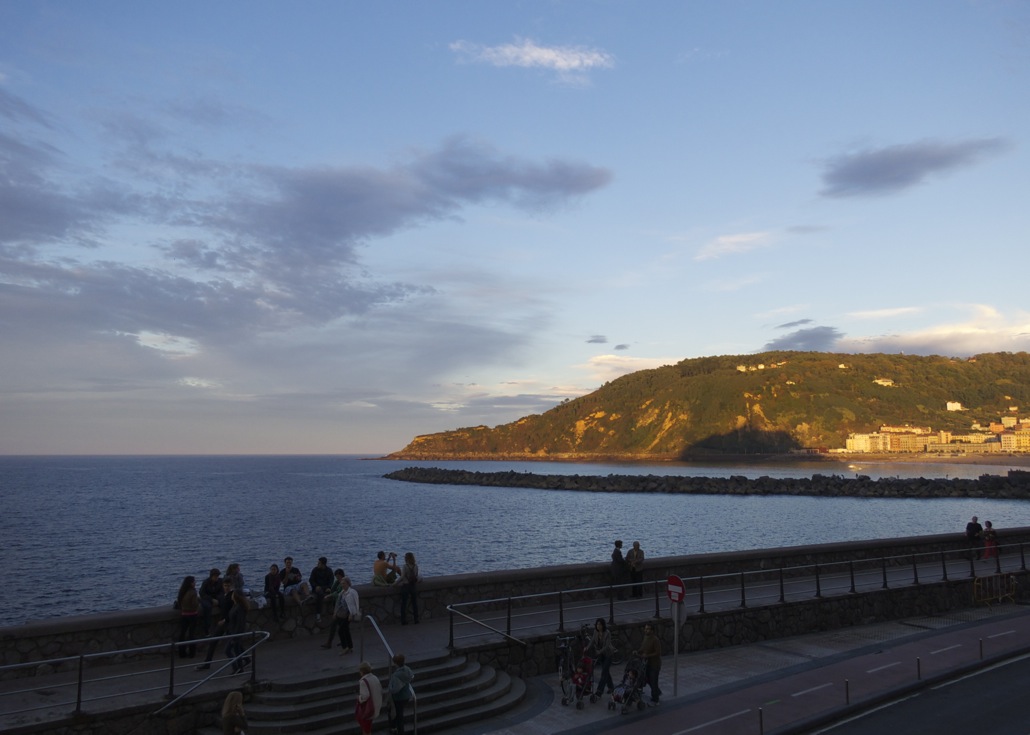
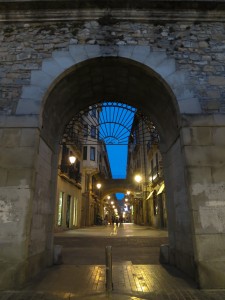
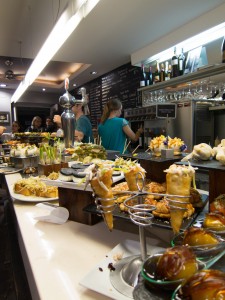

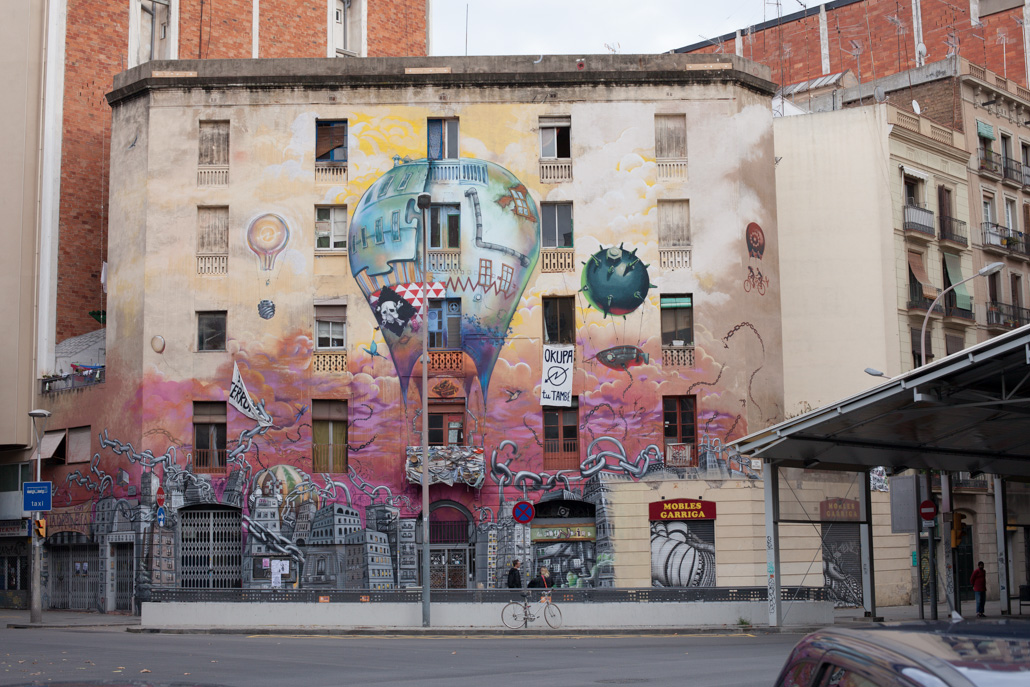
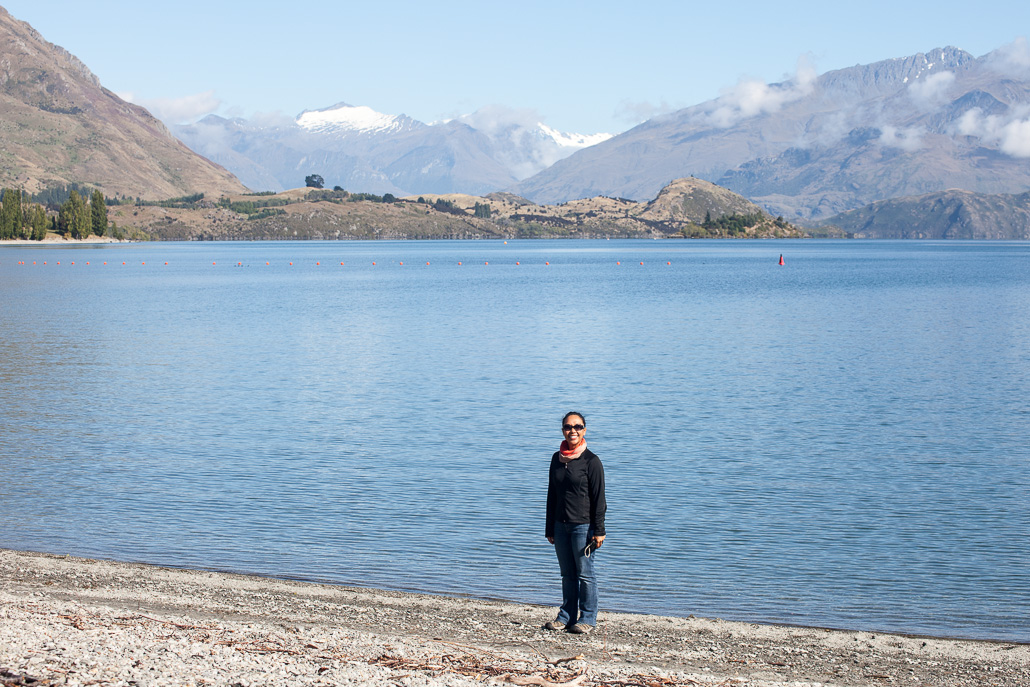
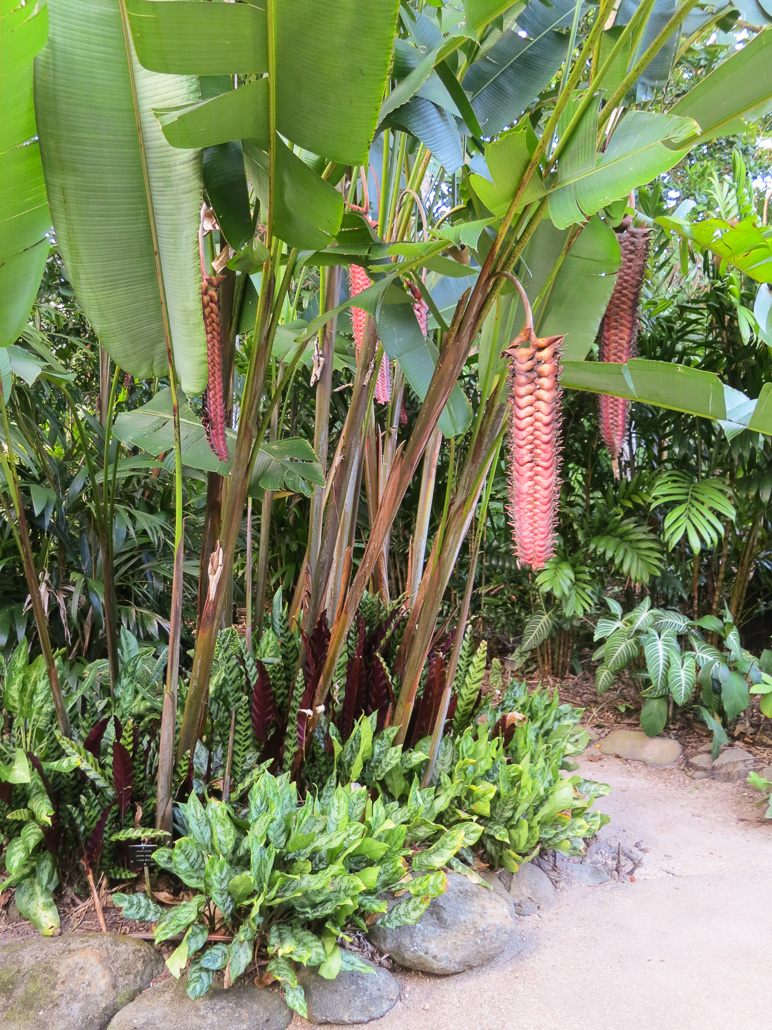
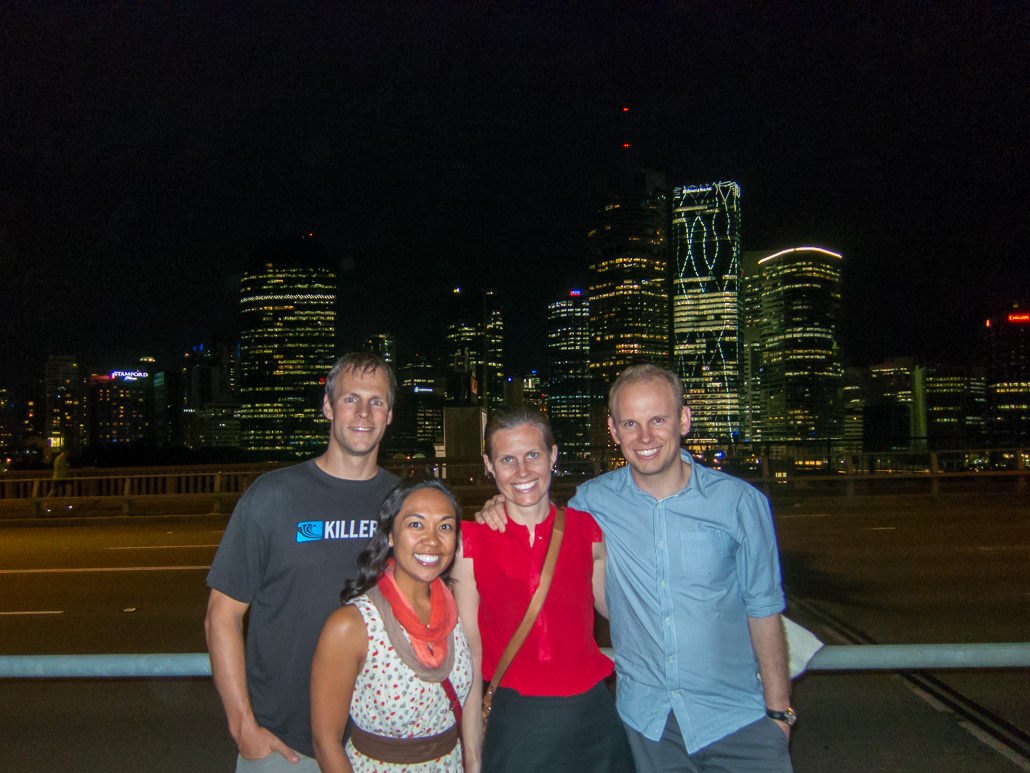
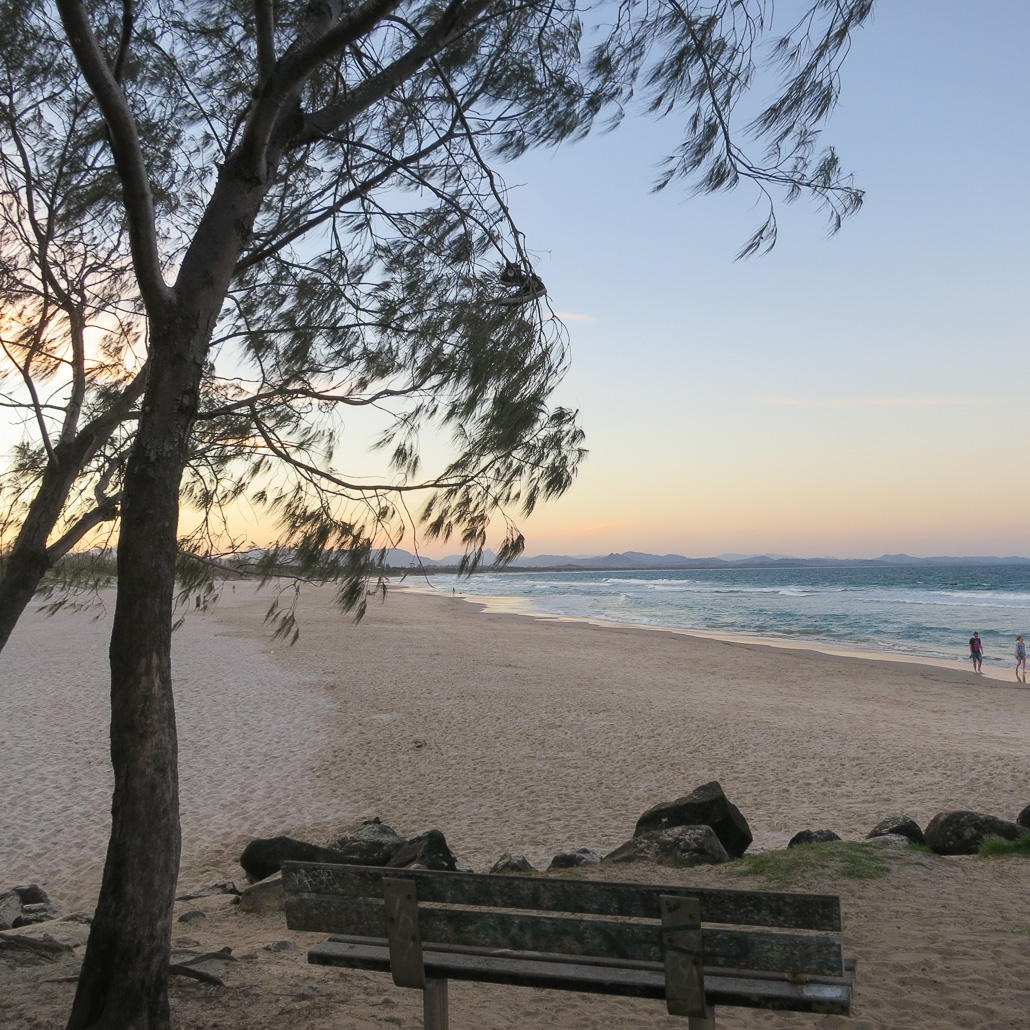
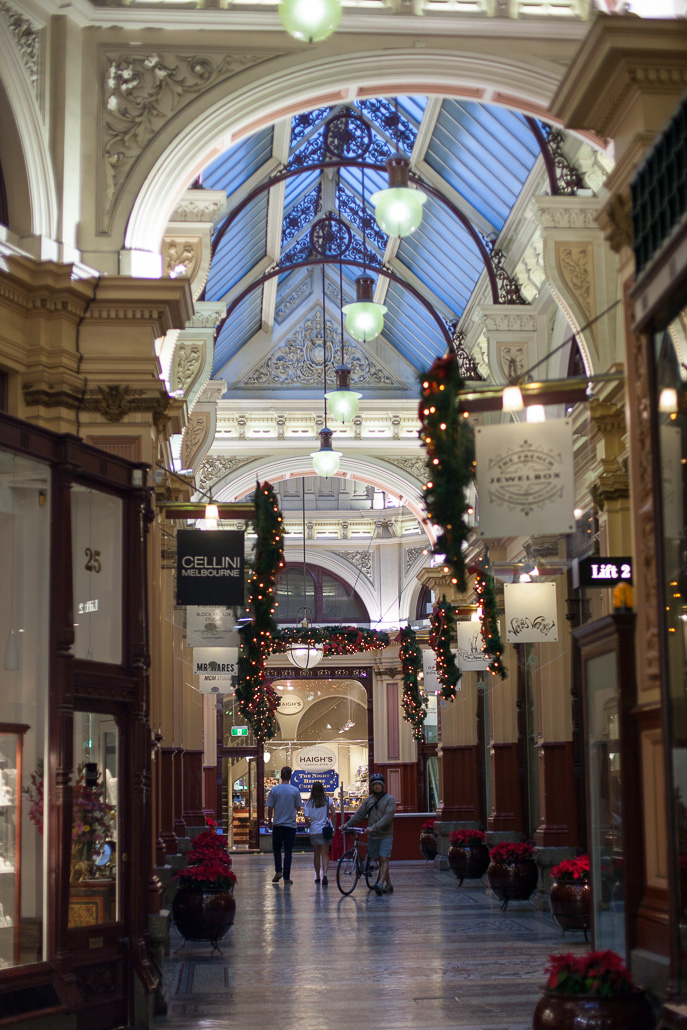
7 Responses to A Culinary Expedition: Donostia-San Sebastián, Spain
Amazing lessons here! I thought of you both on Thanksgiving and was wondering if you were having a turkey dinner.
Happy Thanksgiving Marian! Thanks for your comments. It feels nice to receive feedback from our friends and family.
Oh wow sooooo kewl Marisa! Just looking at the pics of the food is making my mouth water. 🙂 And what a great view from yr apartment! I had not heard of San Sebastián before but now I definitely want to visit. I have had jamon before and its super yummy. Keep posting pics and stories its fun to follow you around the world. I’m so happy for you and Mike. What an AWESOME adventure. Be blessed.
Hey Wilson! You have to visit San Sebastian one day! It’s a gorgeous “belle époque”-esqe beach town that has a great food culture…as you read about in our blog. hah! Hope you’re well! Thanks for stopping by and reading about our adventures. We love comments!
Now this is a blog I can follow! Half of the photos are of food and some are of beaches. I haven’t seen any pictures of cookies yet though…
Your pictures make it look like the weather is pretty fair. Is that true?
Hi Lincoln! Happy Holidays! Thanks for stopping by and admiring our food pictures. Cookies aren’t that popular in Europe, but they do have amazing macarons…stay tuned for that.
I love San Sebastian! I was there last July and could retire there tomorrow.